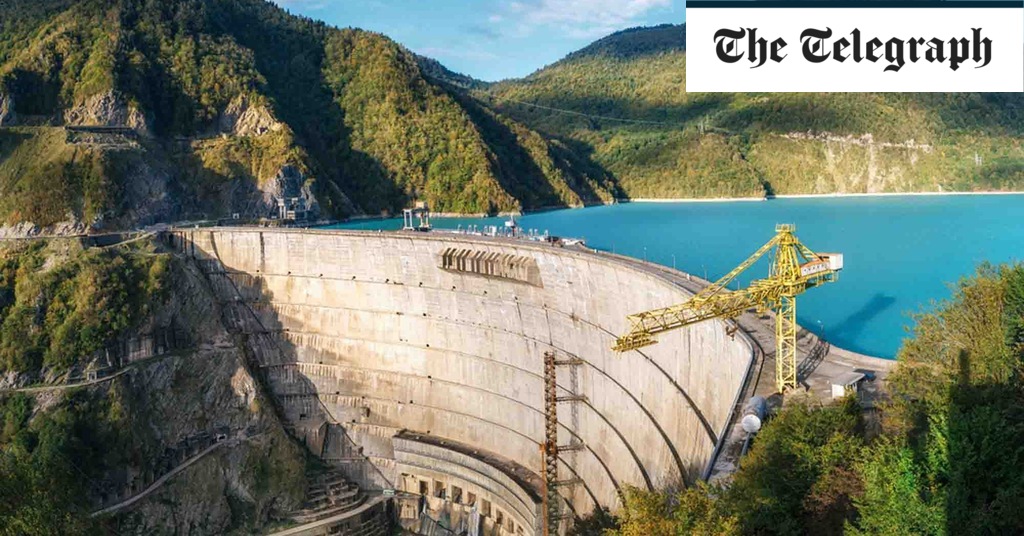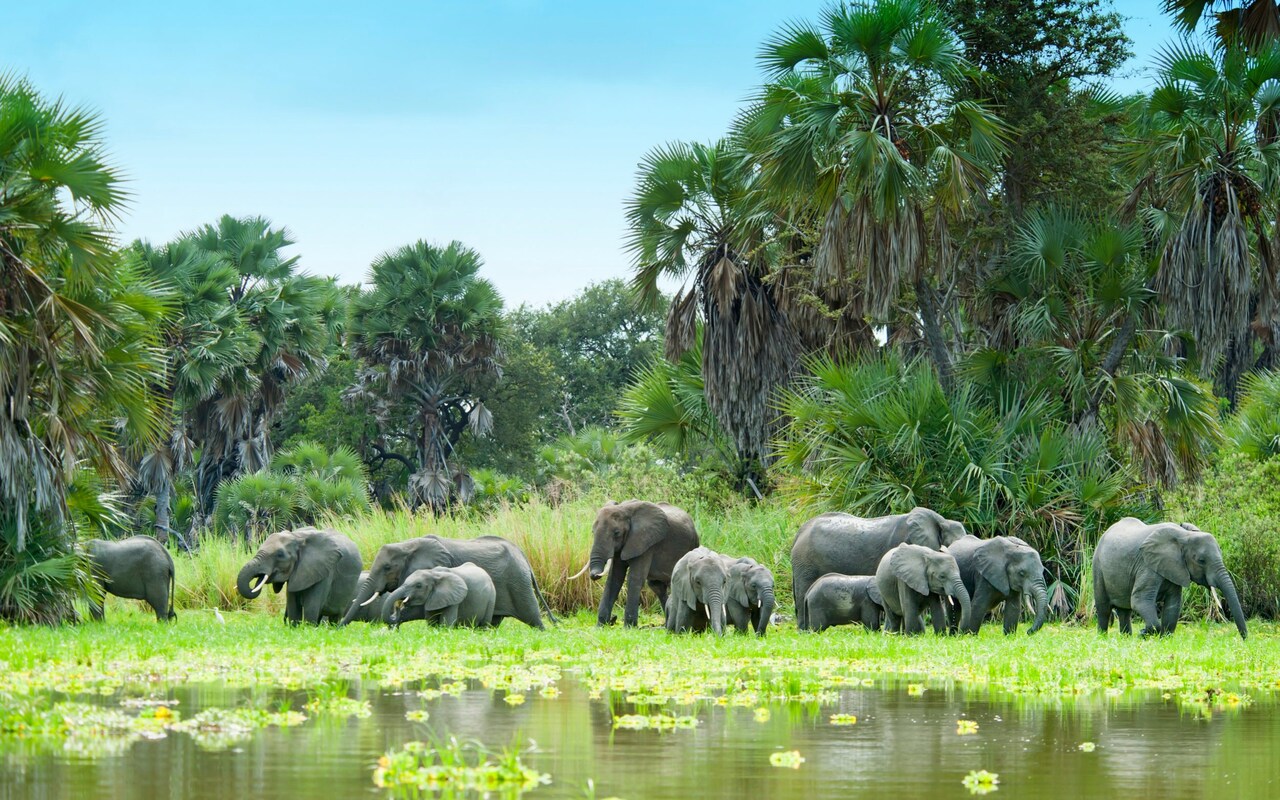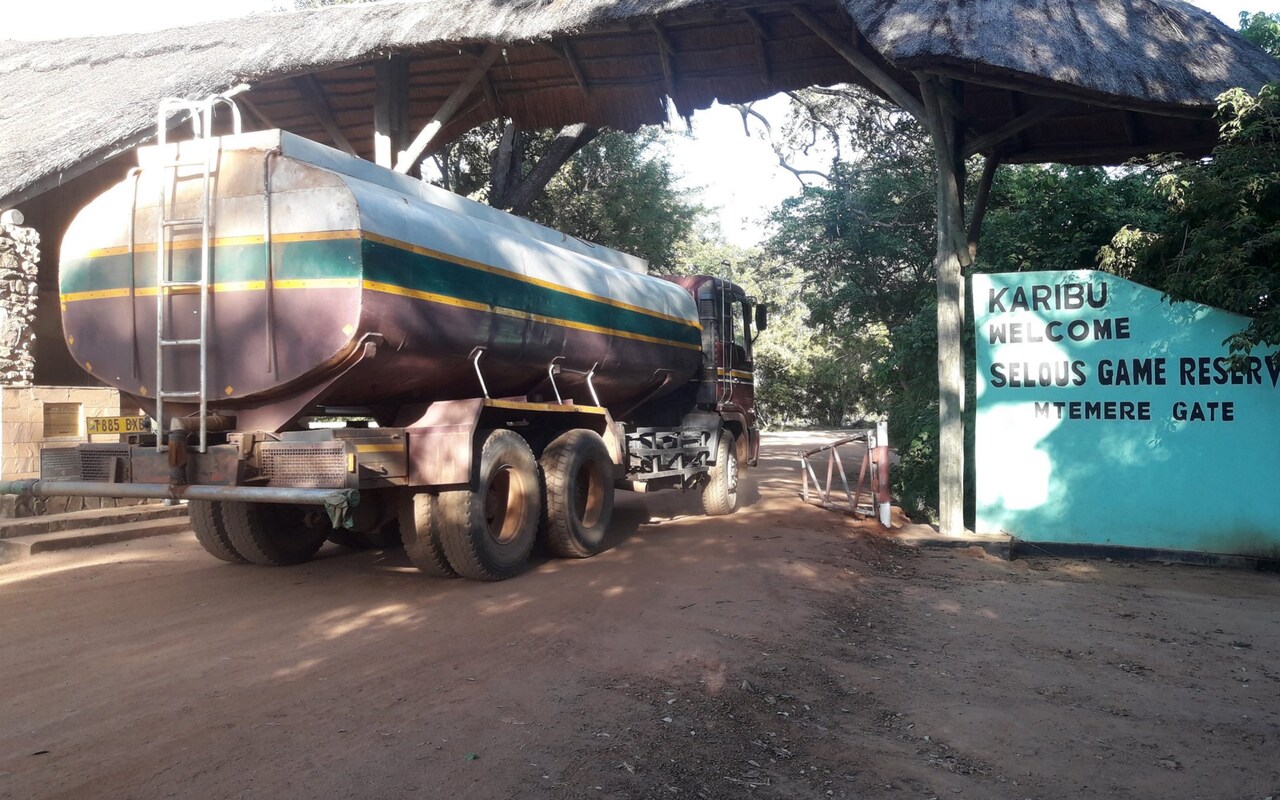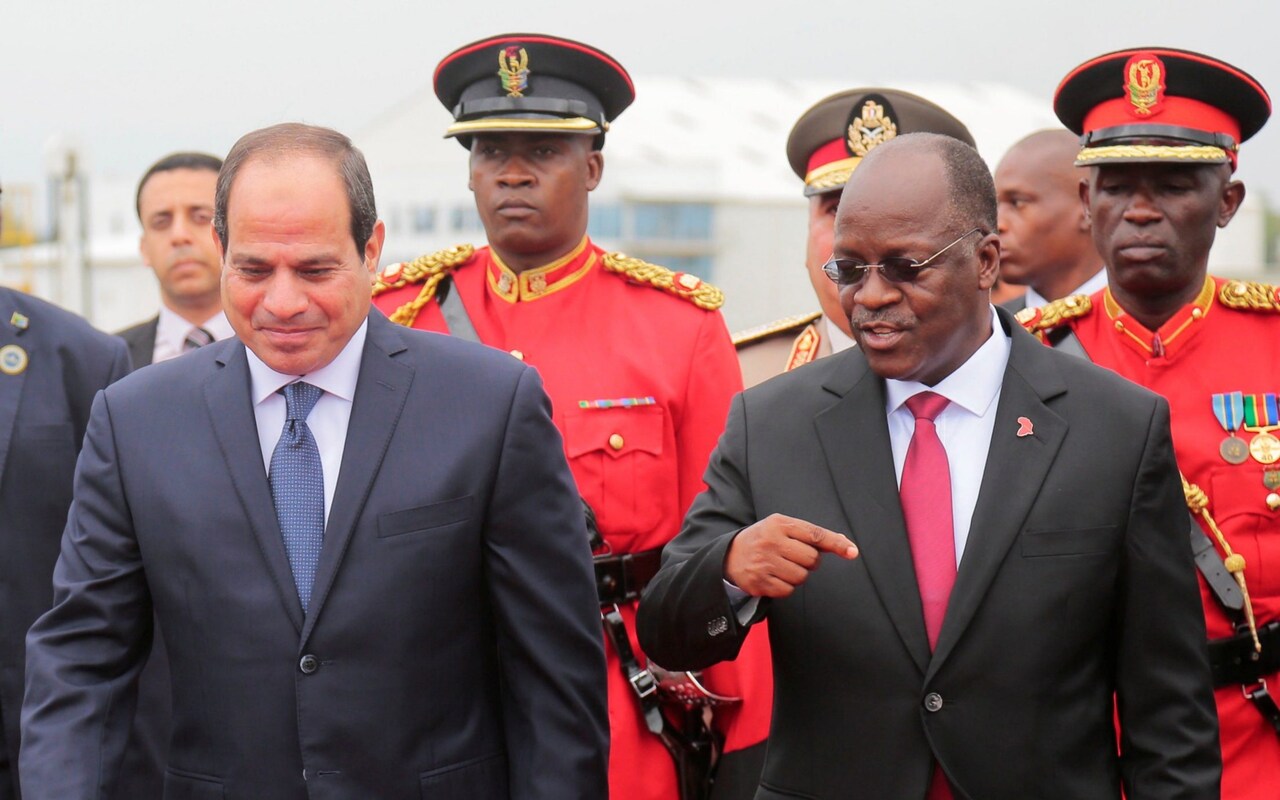Papayo
JF-Expert Member
- Mar 21, 2019
- 270
- 358
It is arguably the Empire’s greatest legacy to conservation, the outrageous vision of a British poacher-turned-naturalist whose misanthropic cussedness would shape Africa’s largest wildlife sanctuary.
Stretching across a swathe of woodland savannah four-fifths the size of the Republic of Ireland, the Selous Game Reserve in southern Tanzania is among the world’s biggest protected wildernesses, home, until Africa’s latest poaching frenzy, to one of the largest elephant concentrations on the continent.
For much of its 123-year history, the Selous has been threatened, coveted by prospectors and industrialists who saw in its untouched vastness the possibility of equally vast wealth.
Until this year the profit-seekers had been held back. That is about to change, with work beginning on a development that will forever change the Selous’ landscape.

A herd of African Elephants approaching the shore of Lake Manze in the Selous Game Reserve Credit: guenterguni
Kicking up plumes of dust that scatter the grazing wildlife, a relentless flow of bulldozers, water tankers and lorries trundles along the main track across the northwest of the reserve towards Stiegler’s Gorge.
For decades, tourist and hunting lodges aside, the only permanent structures in the reserve were two tombstones.
One marked the grave of Sir Frederick Selous, the imperial adventurer after whom the reserve is named, the other that of Constantine Ionides, a snake-collecting English eccentric who made the reserve what it is today.
But now, in Stiegler’s 330-foot deep canyon along the River Rufiji, construction is underway — with the undeclared assistance of China — on one of the world’s largest dams, the first time such a project has ever taken place in a Unesco World Heritage site.
Conservationists, who have quietly been celebrating a decline in poaching in recent years, see it as a catastrophe, with Unesco’s World Heritage Committee warning of “a high likelihood of serious and irreversible damage”.
For them, it is more than a mere eyesore. The dam will upend the reserve’s fragile ecosystem, reduce the habitat of the wildlife that has thrived in it and embolden further human encroachment.
Worried Western donors, too, have lobbied Tanzania to halt the development, arguing that the dam is unlikely ever to work and could even bankrupt the country.
“It is a colossal white elephant, ruinous in every way,” an economist based in Tanzania says. “It is hard to think of a project more ill-conceived.”

A relentless flow of bulldozers, water tankers and lorries trundles along the main track across the northwest of the reserve towards Stiegler’s Gorge Credit: Adrian Blomfield
Such criticisms are voiced quietly. John Magufuli, Tanzania’s president, brooks neither domestic nor Western criticism. Since he came to power in 2015, independent newspapers have been closed and 20 opposition MPs arrested. One of the president’s foremost parliamentary critics was shot 16 times in 2017.
Questioning the dam in public is risky, as the government has gone to pains to point out.
“The government will go on with the implementation of the project whether you like it or not,” Kangi Lugola, Tanzania’s environment minister, told parliament last year. “Those who resist the project will be jailed.”
For the president, the ends justify the means. The Stiegler’s Gorge Dam would more than double the electricity Tanzania generates, could set Tanzania on the road to industrialisation and bring power to the two-thirds of his people without it.
For his critics, however, the dam is just another vanity project by a president who prizes grandiosity over realism, one likely to become yet another vehicle for corrupt government officials to pocket cash.
Little the president says about the dam is grounded in reality, they say. A forecast completion date of 2021 will probably overrun by at least six years, western experts reckon; costs could spiral to £7.6 billion, treble the project’s present budget, making a return on investment unlikely.

Tanzania's President John Magufuli walks alongside President Abdel Fattah al-Sisi of Egypt Credit: Reuters
Moreover, a feasibility study projecting the dam’s likely generation capacity was conducted quarter of a century ago, before upstream irrigation and climate change reduced water levels in the Rufiji.
“The river has lost 25 percent of its capacity in the past 25 years,” says Zitto Kabwe, an economist and leading opposition politician who has frequently been arrested for criticising the government. “It is not possible to produce the electricity talked about.”
The funding, too, is murky. Mr Magufuli insists Tanzania can pay for the dam itself and that funds will not be sought from China.
However, registration logs show large numbers of employees from two state-owned Chinese companies, SinoHydro and Power China, visiting the construction site daily.
Already, the Selous is already being radically altered. Loggers, most of them reportedly prisoners, have begun clearing an area of threatened Miombo woodland the size of Surrey to make way for what will be East Africa’s largest artificial reservoir.
Elsewhere, quarries are being gouged out and bridges laid to accommodate heavy-duty vehicles.
It is only the start. If completed, the nature of the Rufiji would forever change as sandbanks where hippos and crocodiles bask are submerged and its stunning oxbow lakes disappear.
Further downstream there would be devastation, too, as the vast Rufiji Delta, one of the continent’s most important wetland sites, shrinks, threatening disaster for East Africa’s largest endangered mangrove forest.
Ionides’ vision of an untouched wilderness, and the miracle of regeneration he wrought, is rapidly unravelling.
“The Father of the Selous” did not create the reserve; a small protected area was carved out by Tanganyika’s German governor in 1896. But, as game warden after Britain took over following the First World War, he increased its boundaries 20-fold. It now encompasses 22,000 square miles.
Ruthlessness was involved: the local Ngindo tribesmen who had moved into the area two decades earlier, fleeing Germany’s brutal suppression of the Maji Maji rebellion, were encouraged and eventually forced to move off to reservations where their livestock were safer from lion attack.
But Ionides reasoned the land, with its poor soil and plagues of tsetse fly, was only suitable for game. His unyielding desire for solitude, perhaps the result of bullying at Rugby whose latter-day Flashmans could never forgive his Greek origins even though he was a fourth- generation Englishman, also played a part.
Whatever the reason, the regeneration of nature was remarkable.
Half a century earlier, Joseph Thomson, the Scottish explorer, had not seen a single elephant when he crossed the area: they had all been poached by the Arab slave and ivory traders who plied their wretched trade along the Rufiji’s banks until Britain ended the practice.
By Tanzania’s independence in 1961 there were 150,000 of them in the reserve he named after his hero and fellow Old Rugbeian.
Selous was killed in the reserve in 1917, the naturalist and big-game hunter who inspired Rider Haggard’s Allan Quatermain meeting his fate at the hands of the Schutztruppe commanded by his nemesis Gen Paul von Lettow-Vorbeck.
His grave, beneath a tamarind tree in the shadow of the Beho Beho hills a few yards from the still-visible trenches where he fell, is a scene, laced with poignancy and romance, that seems to encapsulate the Selous itself, the spirit of Africa as it once was.
In its last great redoubt, that spirit, already tenuous, looks increasingly doomed. Territory elsewhere in the reserve has already been hived off by Rosatom, a state-owned Russian firm to mine uranium. Its work will forever contaminate the soil in an area the elephants still roam.
With other riches in the ground too — copper, silver, cobalt, zinc and gold — the vultures of business circling. Should the dam go ahead, further eroding the Selous’ uniqueness, conservationists say it will be harder than ever to keep them at bay.
In the meantime, the elephants that had been the reserve’s chief asset are vanishing as the poachers do their bloody work. An aerial survey in 2014 found just 15,000 left in the reserve, a fall of 45,000 in just five years and a 90 percent decline since Ionides’ day.
Though the numbers have stabilised in the last few years, the chances of pulling off an Ionides-style miracle a second time seem slight.
Even as Ionides set about his carving out his wilderness, many in the Colonial Office dismissed him as, at best, a flawed visionary creating an untenable dream.
Nearly 60 years after his death, with his vision visibly beginning to crumble, the critics seem likely to be proved right.

 www.telegraph.co.uk
www.telegraph.co.uk
Stretching across a swathe of woodland savannah four-fifths the size of the Republic of Ireland, the Selous Game Reserve in southern Tanzania is among the world’s biggest protected wildernesses, home, until Africa’s latest poaching frenzy, to one of the largest elephant concentrations on the continent.
For much of its 123-year history, the Selous has been threatened, coveted by prospectors and industrialists who saw in its untouched vastness the possibility of equally vast wealth.
Until this year the profit-seekers had been held back. That is about to change, with work beginning on a development that will forever change the Selous’ landscape.

A herd of African Elephants approaching the shore of Lake Manze in the Selous Game Reserve Credit: guenterguni
Kicking up plumes of dust that scatter the grazing wildlife, a relentless flow of bulldozers, water tankers and lorries trundles along the main track across the northwest of the reserve towards Stiegler’s Gorge.
For decades, tourist and hunting lodges aside, the only permanent structures in the reserve were two tombstones.
One marked the grave of Sir Frederick Selous, the imperial adventurer after whom the reserve is named, the other that of Constantine Ionides, a snake-collecting English eccentric who made the reserve what it is today.
But now, in Stiegler’s 330-foot deep canyon along the River Rufiji, construction is underway — with the undeclared assistance of China — on one of the world’s largest dams, the first time such a project has ever taken place in a Unesco World Heritage site.
Conservationists, who have quietly been celebrating a decline in poaching in recent years, see it as a catastrophe, with Unesco’s World Heritage Committee warning of “a high likelihood of serious and irreversible damage”.
For them, it is more than a mere eyesore. The dam will upend the reserve’s fragile ecosystem, reduce the habitat of the wildlife that has thrived in it and embolden further human encroachment.
Worried Western donors, too, have lobbied Tanzania to halt the development, arguing that the dam is unlikely ever to work and could even bankrupt the country.
“It is a colossal white elephant, ruinous in every way,” an economist based in Tanzania says. “It is hard to think of a project more ill-conceived.”

A relentless flow of bulldozers, water tankers and lorries trundles along the main track across the northwest of the reserve towards Stiegler’s Gorge Credit: Adrian Blomfield
Such criticisms are voiced quietly. John Magufuli, Tanzania’s president, brooks neither domestic nor Western criticism. Since he came to power in 2015, independent newspapers have been closed and 20 opposition MPs arrested. One of the president’s foremost parliamentary critics was shot 16 times in 2017.
Questioning the dam in public is risky, as the government has gone to pains to point out.
“The government will go on with the implementation of the project whether you like it or not,” Kangi Lugola, Tanzania’s environment minister, told parliament last year. “Those who resist the project will be jailed.”
For the president, the ends justify the means. The Stiegler’s Gorge Dam would more than double the electricity Tanzania generates, could set Tanzania on the road to industrialisation and bring power to the two-thirds of his people without it.
For his critics, however, the dam is just another vanity project by a president who prizes grandiosity over realism, one likely to become yet another vehicle for corrupt government officials to pocket cash.
Little the president says about the dam is grounded in reality, they say. A forecast completion date of 2021 will probably overrun by at least six years, western experts reckon; costs could spiral to £7.6 billion, treble the project’s present budget, making a return on investment unlikely.

Tanzania's President John Magufuli walks alongside President Abdel Fattah al-Sisi of Egypt Credit: Reuters
Moreover, a feasibility study projecting the dam’s likely generation capacity was conducted quarter of a century ago, before upstream irrigation and climate change reduced water levels in the Rufiji.
“The river has lost 25 percent of its capacity in the past 25 years,” says Zitto Kabwe, an economist and leading opposition politician who has frequently been arrested for criticising the government. “It is not possible to produce the electricity talked about.”
The funding, too, is murky. Mr Magufuli insists Tanzania can pay for the dam itself and that funds will not be sought from China.
However, registration logs show large numbers of employees from two state-owned Chinese companies, SinoHydro and Power China, visiting the construction site daily.
Already, the Selous is already being radically altered. Loggers, most of them reportedly prisoners, have begun clearing an area of threatened Miombo woodland the size of Surrey to make way for what will be East Africa’s largest artificial reservoir.
Elsewhere, quarries are being gouged out and bridges laid to accommodate heavy-duty vehicles.
It is only the start. If completed, the nature of the Rufiji would forever change as sandbanks where hippos and crocodiles bask are submerged and its stunning oxbow lakes disappear.
Further downstream there would be devastation, too, as the vast Rufiji Delta, one of the continent’s most important wetland sites, shrinks, threatening disaster for East Africa’s largest endangered mangrove forest.
Ionides’ vision of an untouched wilderness, and the miracle of regeneration he wrought, is rapidly unravelling.
“The Father of the Selous” did not create the reserve; a small protected area was carved out by Tanganyika’s German governor in 1896. But, as game warden after Britain took over following the First World War, he increased its boundaries 20-fold. It now encompasses 22,000 square miles.
Ruthlessness was involved: the local Ngindo tribesmen who had moved into the area two decades earlier, fleeing Germany’s brutal suppression of the Maji Maji rebellion, were encouraged and eventually forced to move off to reservations where their livestock were safer from lion attack.
But Ionides reasoned the land, with its poor soil and plagues of tsetse fly, was only suitable for game. His unyielding desire for solitude, perhaps the result of bullying at Rugby whose latter-day Flashmans could never forgive his Greek origins even though he was a fourth- generation Englishman, also played a part.
Whatever the reason, the regeneration of nature was remarkable.
Half a century earlier, Joseph Thomson, the Scottish explorer, had not seen a single elephant when he crossed the area: they had all been poached by the Arab slave and ivory traders who plied their wretched trade along the Rufiji’s banks until Britain ended the practice.
By Tanzania’s independence in 1961 there were 150,000 of them in the reserve he named after his hero and fellow Old Rugbeian.
Selous was killed in the reserve in 1917, the naturalist and big-game hunter who inspired Rider Haggard’s Allan Quatermain meeting his fate at the hands of the Schutztruppe commanded by his nemesis Gen Paul von Lettow-Vorbeck.
His grave, beneath a tamarind tree in the shadow of the Beho Beho hills a few yards from the still-visible trenches where he fell, is a scene, laced with poignancy and romance, that seems to encapsulate the Selous itself, the spirit of Africa as it once was.
In its last great redoubt, that spirit, already tenuous, looks increasingly doomed. Territory elsewhere in the reserve has already been hived off by Rosatom, a state-owned Russian firm to mine uranium. Its work will forever contaminate the soil in an area the elephants still roam.
With other riches in the ground too — copper, silver, cobalt, zinc and gold — the vultures of business circling. Should the dam go ahead, further eroding the Selous’ uniqueness, conservationists say it will be harder than ever to keep them at bay.
In the meantime, the elephants that had been the reserve’s chief asset are vanishing as the poachers do their bloody work. An aerial survey in 2014 found just 15,000 left in the reserve, a fall of 45,000 in just five years and a 90 percent decline since Ionides’ day.
Though the numbers have stabilised in the last few years, the chances of pulling off an Ionides-style miracle a second time seem slight.
Even as Ionides set about his carving out his wilderness, many in the Colonial Office dismissed him as, at best, a flawed visionary creating an untenable dream.
Nearly 60 years after his death, with his vision visibly beginning to crumble, the critics seem likely to be proved right.

Africa's 'last great wilderness' in jeopardy as autocratic president plans mega-dam that could bankrupt Tanzania
It is arguably the Empire’s greatest legacy to conservation, the outrageous vision of a British poacher-turned-naturalist whose misanthropic cussedness would shape Africa’s largest wildlife sanctuary.
